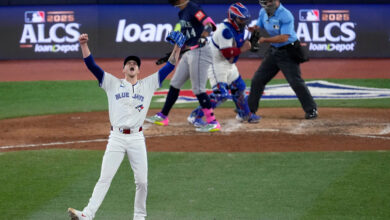
Want to Better Market Baseball to Millennials? Try the Radio
A recurring topic of discussion in baseball is pace of play. Mound visits are being limited at the major league level this season, while the minors are experimenting with new extra-inning rules. The assumption underlying all of these changes is that baseball needs to shorten games to attract a millennial audience. As evidence, MLB will cite that the average MLB fan is 57 years old.
Except that is not what the statistic actually says. It actually says that the average television viewer of baseball is 57 years old. Perhaps one solution to baseball’s problem might be changing the media, not the game. I propose marketing baseball to millennial on the radio.
One unremarked-upon shift in the media landscape is the resurgence of audio-only media, such as podcasts and Pandora. A millennial is more likely to follow a podcast than the 11 o’clock local news and the generation behind them is growing up with all kinds of streaming audio on demand.
Meanwhile, I would argue that baseball is the only major U.S. sport that is both enjoyable and compelling without a picture. This could be baseball’s gateway to younger fans. Baseball on the radio is an enjoyable combination of a sporting event with a talk show. That was Ron Santo’s appeal. Baseball’s situational nature and slower pace make it compelling background audio for work, workouts, or lounging.
Remember that entire generations became baseball fans over the radio before television was invented. The current media marketplace makes this an attractive time to go back to the well. Audio streaming eats up less data on smart phones than HD broadcasts and does not require one’s full attention, a necessity in the new media landscape. Also, online radio broadcasts are exempt from the same blackout rules as game streams, rendering them easier to access.
Make every radio broadcast accessible on Alexa and iPhones and new fans will follow. Radio is a gateway to getting fans back…and a far better idea than starting the 10th inning with a man on second base.
Bonus Feature – Daydream Cubs: 1987
In a parallel universe where Moshe was transported back as GM of the 1981 Cubs, we rejoin the Daydream Cubs. Click here for 1986, or check out all drafts & rosters to date.
1987 Draft: (#) Player’s real-life selection round, AS= All-Star; HoF = Hall of Famer; GG = Gold Glove
- Round 1: Albert Belle (2) – OF: AS (x5)
- Round 2: Brad Ausmus (48) – C: AS (x1), GG (x3)
1987 marks the first draft that will not produce a starter for the Daydream Cubs. Belle is a quality outfielder, but never has a roster spot open for him. In fact, 1987 begins a three year stretch in which the Daydream Cubs’ No. 1 pick will never start for the team. Mike Mussina is available to be drafted in 11th round, but did not sign in real life.
The real story of 1987 is that the Daydream Cubs produce 64 WAR (and will not dip below 60 WAR for over a decade). To put that in perspective, the highest team WAR in real-world history was the 1927 Yankees at 66.3. Yet this juggernaut costs less than $9 million, easily coming in under the Cubs’ real 1987 payroll of $12.7 million. 1987 is the last for both Jody Davis and Lee Smith, the only original 1981 Cubs remaining on the roster.
Meanwhile, at season’s end I would target prospect Craig Biggio in trade. I offer Dwight Gooden, who, unknown to anyone but me, has pitched his last elite season (and is becoming expensive) and Wally Joyner (who is about to be supplanted by Fred McGriff).


